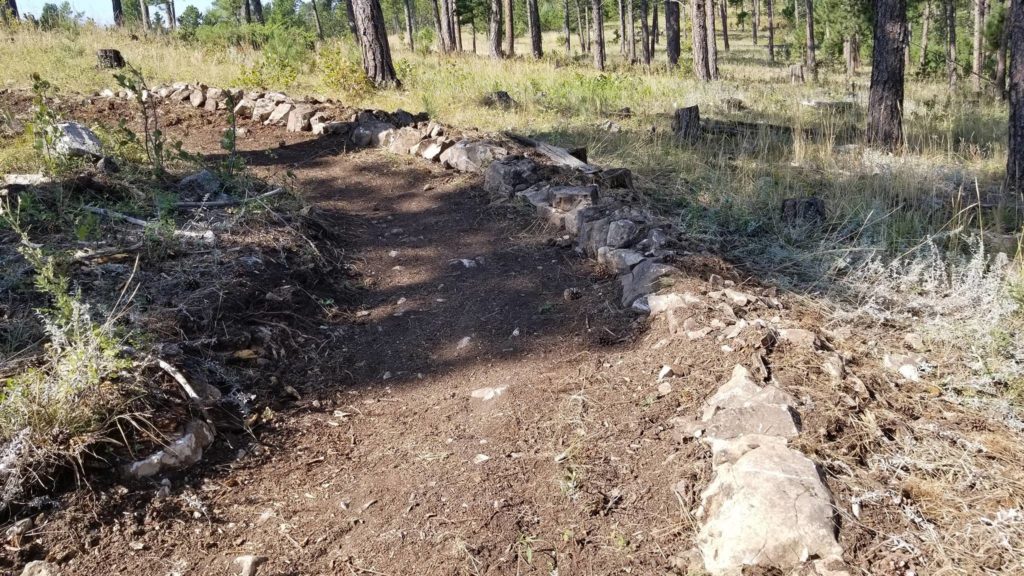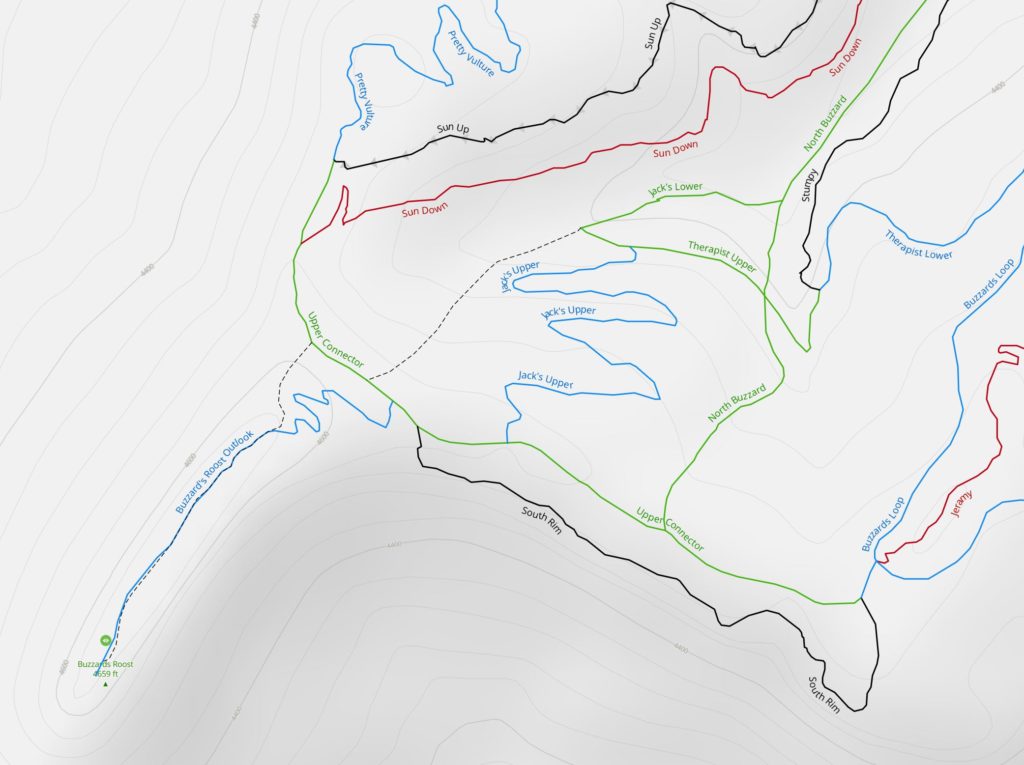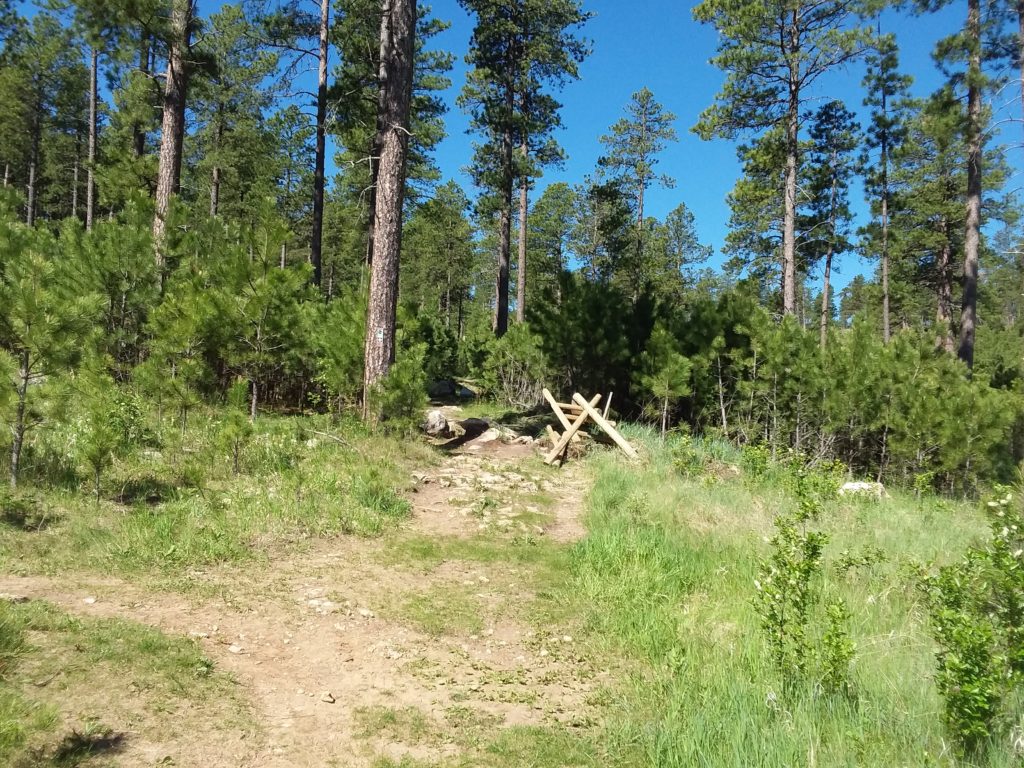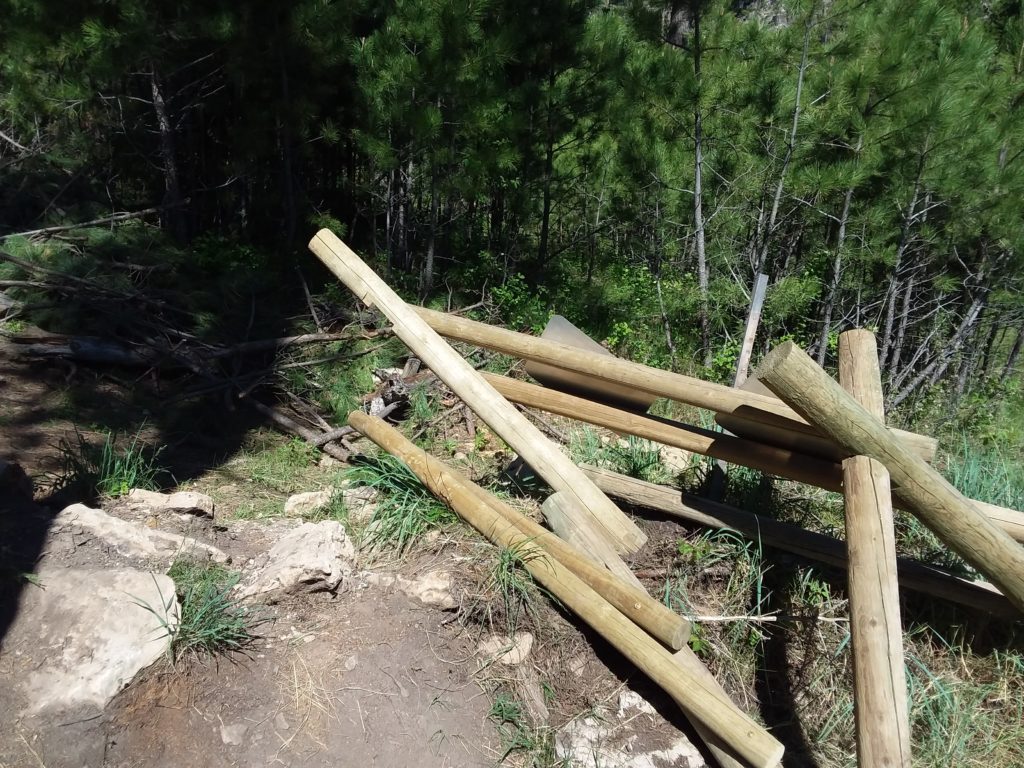We would like to remind the trail-using community that the preservation and enjoyment of the trails in our Black Hills are all of our responsibility. We appreciate all of those who strive to help educate their fellow trail users on the importance of the tread lightly principles, including leaving no trace, not cutting switchbacks, staying on designated trails, and not using trails when wet. Sharing these principles and the reasons behind them with other trail users while avoiding confrontation helps ensure all of our enjoyment!
Repeated vandalism at Buzzards Roost, located just off of Highway 44 west of Rapid City, prompted this reminder. Volunteer, Forest Service, and Montana Conservation Corps crews have closed off non-designated trails that are causing erosion issues. Users have continued to remove the fencing and signage, often within days of being replaced.
We know conveying a good understanding of why these changes are made is a lot more convincing than us screaming “trust us, we know things!”. Read more to learn the “why” behind these changes.
The Buzzards Roost Trail System may have been constructed by mountain bikers (it was completed by the Black Hills Mountain Bike Association in 2011), but it has become one of the most popular hiking destinations in the Rapid City area. With its close proximity to Rapid City and one of the best views in the Black Hills, it’s easy to understand why this trail system is so popular. Typically, a hiker has to suffer through a lot more driving, a lot more hiking, or both, to enjoy a view like the one from Buzzards Roost Lookout. If you haven’t taken advantage of this hike right in our backyard, you’re missing out. Put it on your list.
Trails and trail systems evolve. We learn what works and what doesn’t from what the users do, what the rain does when coursing down the hillsides, where the re-growth happens fastest, and the confluence of all these variables with regular maintenance that needs to be done year after year. Although they seem basic, trails and trail systems are engineered to work for the user and to work with the land. The Mystic District of the Black Hills National Forest and Black Hills Trails are working in concert on ongoing minor revisions to the Buzzards Roost system, primarily to address erosion issues that threaten the long-term sustainability of several trails there.
In 2018 several re-routes were done on the primary route used to access the lookout. These trails, Jacks, and the connector to Buzzards Roost Lookout had areas suffering significant erosion damage that threatened their long-term sustainability. The significant growing user numbers increased this damage. As water continues to erode these areas year after year, they are much more difficult to navigate, and the damage spreads further down the trail. When the erosion is bad enough, it will begin to threaten not just plants and the landscape, but also other trails even further downslope.

With enough erosion, a deep chasm will form, exposing giant rocks and roots. Most hikers have seen trails with these deep cuts that require you to leap side to side as you make your way along. These now-closed trails at Buzzards Roost don’t look like that, so what’s the big deal? These re-routes were done pro-actively to prevent them from deteriorating into that sort of condition.

When closing these old trails, a light hand is preferred. Most often these old routes will close up and heal all on their own as soon as people stop using them. A lack of foot and bike traffic allows grasses and trees to re-establish, putting an end to water coursing down the trail, which halts the erosion. Not having to install structures such as fencing along the trail creates a more natural experience for all of us to enjoy. So initially on these Buzzard’s Roost routes, only a modest amount of signage was added directing users toward the new trails. Still, the old routes have continued to see use, and have continued to erode.
These heavily used trails required more drastic measures, including fencing, which has been installed to prevent continued use of the old trail. On several different occasions, users have dismantled this fencing or even completely removed it from the site.
Although new trails move very slowly at the federal level, we are extremely optimistic about the future of trails in the Rapid City area. However, having to repeatedly address vandalism is a drain on both time and dollars, but it’s also much, much more than that. Whether Forest Service staff, Black Hills Trails, and other volunteers or mobile crews like the Montana Conservation Corps, these individuals with boots on the ground are all out there trying to do the right thing and make the trails better for everyone. It’s easy to take vandalism like this a bit personally, and it can be hard not to let such events erode at your will to keep putting that best foot forward.
We will keep trying, and because we’re all in this together, we know all those that love and use Buzzards Roost will keep putting their best foot forward too, by treading lightly and staying on designated trails. We hope even those who disagree with some of the changes happening with trails will put their best foot forward by sitting down and discussing their concerns. We’ll save a seat for you. Thanks for reading and sharing.


